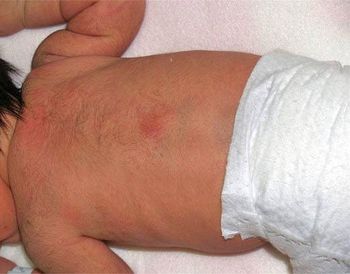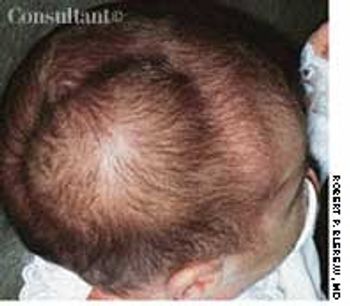
The American Academy of Pediatrics (AAP) has endorsed the recommendation of the World Health Organization (WHO) Strategic Advisory Group of Experts on Immunization to retain the use of thimerosal as a preservative in vaccines.

The American Academy of Pediatrics (AAP) has endorsed the recommendation of the World Health Organization (WHO) Strategic Advisory Group of Experts on Immunization to retain the use of thimerosal as a preservative in vaccines.

Adolescents who use earbuds and headphones with their music players and game systems could be damaging their hearing without knowing it. Now parents overwhelmingly want them screened for hearing loss, says the University of Michigan C.S. Mott Children’s HospitalNational Poll on Children’s Health.

The kindergarteners and first graders at Sandy Hook Elementary School in Newtown, Connecticut, saw first hand horrors that many of their parents will never see in their lifetimes, yet the children will eventually cope with this tragedy and grow up without long-term emotional problems, say experts, including the American Academy of Pediatrics (AAP), the National Child Traumatic Stress Network (NCTSN), and the Substance Abuse and Mental Health Services Administration (SAMSHA).

Adolescent girls who are frequent smokers are at increased risk for osteoporosis in the lumbar spine and hips as they age, according to new research on the effect of substance use on bone development in teenaged girls.

Children exposed to ischemic-hypoxic events in utero are at increased risk of developing attention-deficit/hyperactivity disorder (ADHD), especially those born prematurely. The findings add to growing evidence that both prenatal and postnatal factors affect neurodevelopment.

Children who watch TV in their bedrooms are at double the risk for being obese and almost 3 times as likely to develop heart disease and diabetes than children who watch the family set,researchers found when they examined how viewing time affects health in children and adolescents.

Babies who are born preterm or small for gestational age are at increased risk for developingesophagitis early in life, according to a recent study of the association between the risk for esophagitis and birth history.

Primary care physicians, including pediatricians, admit that they are not as familiar about specific aspects of epilepsy as they should be.

Children whose diets are high in salt also drink more sugar-sweetened beverages. Together both behaviors may predict a greater risk for obesity.

Children diagnosed with autism spectrum disorder are 9 times more likely to present to the emergency department (ED) for psychiatric reasons.

Facebook, Twitter, and other Internet-based technologies can be effective weapons in the fight against childhood obesity.

A 22-day-old neonate (gestational age, 37 weeks; weight, 4 kg) with otitis media was seen by his pediatrician. On presentation, he was febrile and looked jaundiced. His bilirubin level was slightly above the upper limit of normal.

Pediatricians can play an important role in counseling patients and providing prescriptions for teens in need of emergency contraception for preventing pregnancy.

Criteria for pediatric bipolar disorder, along with treatment options, diagnostic guidance, and collaborative advice for pediatricians, are presented in an American Academy of Pediatrics clinical report

PCR testing can identify viruses that could be responsible for fever without an apparent source in young children, says a new study.

Researchers have developed an algorithm that uses traditional risk factors to predict whether a newborn will develop obesity as a child.

More than one-fourth of new HIV infections in the United States are among persons aged 13 to 24 years, and most of them aren't even aware.

The APA has approved proposed revisions to the new edition of the Diagnostic and Statistical Manual of Mental Disorders to be published in May 2013.

Boys who have undescended testes at birth are at increased risk for testicular cancer when older, according to a new meta-analysis.

This child was born via emergency C-section and at age 2 weeks, had meconium ileus with perforation and DIC secondary to peritonitis. Enterococcus faecalis sepsis developed and terminal ileal resection was performed. Bilirubin levels remained elevated for 5 months.

Kawasaki Disease : Early diagnosis essential When to get anxious about social anxiety disorder Best new products of the year for pediatricians Dermcase : A 10-year-old with a generalized scaly rash Puzzler : Hyperglycemia in a child with abdominal pain

Sickle Cell Disease : Advice for treating emergencies Cyclic vomiting syndrome : Clinical features and comorbidities Care of children with autism : In the ED and other medical settings Dermcase : What a bloody mess A Psuedo Puzzler : Baby girl with hip dysplasia

Contemporary Pediatrics' Editor-in-Chief reflects on Kawasaki disease and what it means when a disease remains an enigma for so long after discovery.

Evaluation of neonates for CNS HSV infection using CSF HSV PCR testing is common, but HSV infection is not, a retrospective study showed.

A 10-year-old girl with a history of abdominal migraines has just at the ED, complaining of new-onset, nonbilious, nonbloody vomiting; abdominal pain.

A look at the best tech products introduced throughout 2012.

The worried parents of a health 10-year-old girl ask you to evaluate her for a total-body red rash associated with scaling and edema.

Bottle feeding significantly increases risk of pyloric stenosis.

At the National Foundation for Infectious Diseases annual flu press conference, the CDC stresses the importance of children, child caregivers, and pregnant women receiving flu vaccinations.

Some recent studies show the significant effects of Kawasaki disease on coronary arteries. Researchers all agree on the urgent need for early diagnosis and improved treatment therapies.